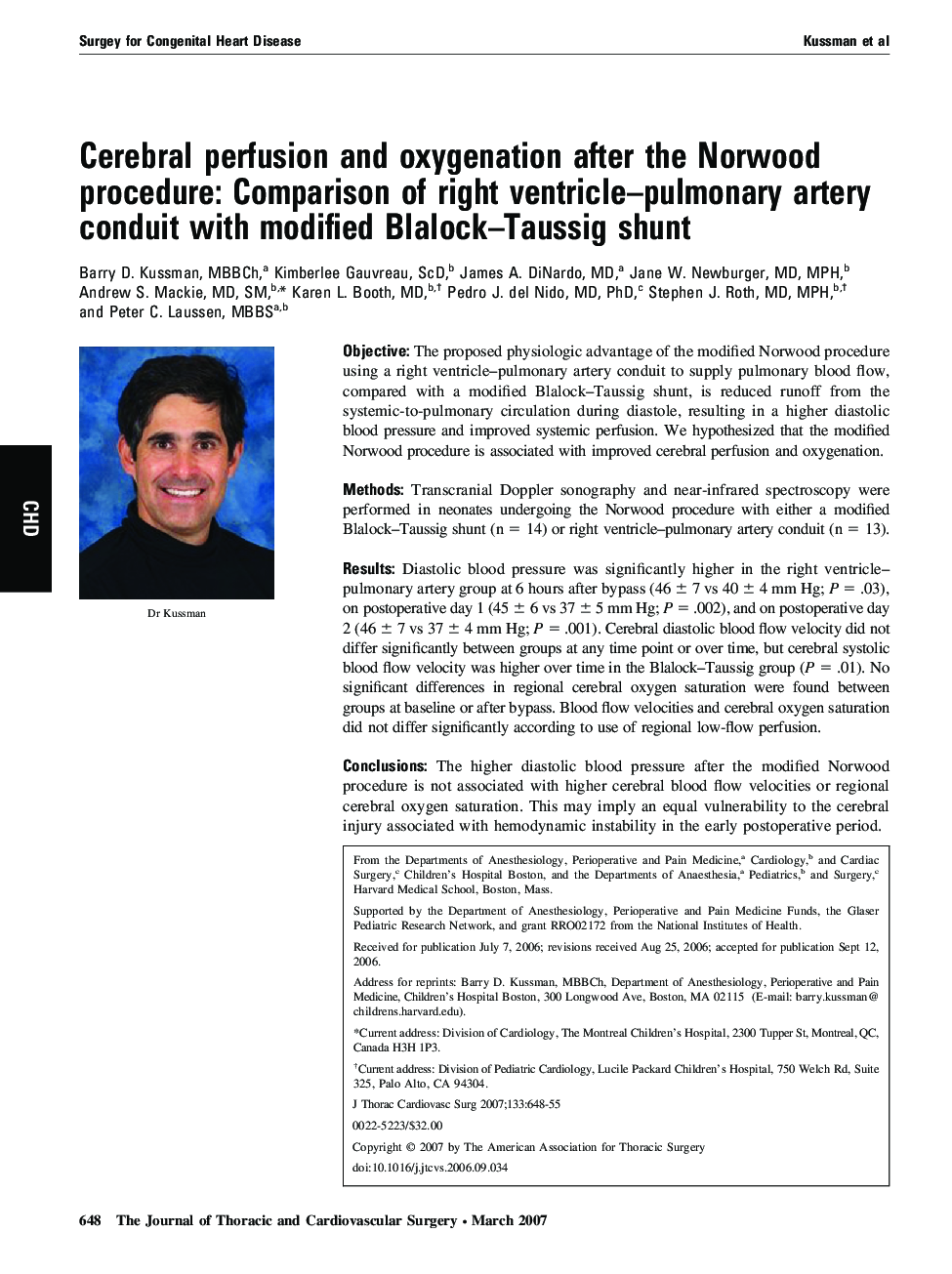| Article ID | Journal | Published Year | Pages | File Type |
|---|---|---|---|---|
| 2986255 | The Journal of Thoracic and Cardiovascular Surgery | 2007 | 8 Pages |
ObjectiveThe proposed physiologic advantage of the modified Norwood procedure using a right ventricle–pulmonary artery conduit to supply pulmonary blood flow, compared with a modified Blalock–Taussig shunt, is reduced runoff from the systemic-to-pulmonary circulation during diastole, resulting in a higher diastolic blood pressure and improved systemic perfusion. We hypothesized that the modified Norwood procedure is associated with improved cerebral perfusion and oxygenation.MethodsTranscranial Doppler sonography and near-infrared spectroscopy were performed in neonates undergoing the Norwood procedure with either a modified Blalock–Taussig shunt (n = 14) or right ventricle–pulmonary artery conduit (n = 13).ResultsDiastolic blood pressure was significantly higher in the right ventricle–pulmonary artery group at 6 hours after bypass (46 ± 7 vs 40 ± 4 mm Hg; P = .03), on postoperative day 1 (45 ± 6 vs 37 ± 5 mm Hg; P = .002), and on postoperative day 2 (46 ± 7 vs 37 ± 4 mm Hg; P = .001). Cerebral diastolic blood flow velocity did not differ significantly between groups at any time point or over time, but cerebral systolic blood flow velocity was higher over time in the Blalock–Taussig group (P = .01). No significant differences in regional cerebral oxygen saturation were found between groups at baseline or after bypass. Blood flow velocities and cerebral oxygen saturation did not differ significantly according to use of regional low-flow perfusion.ConclusionsThe higher diastolic blood pressure after the modified Norwood procedure is not associated with higher cerebral blood flow velocities or regional cerebral oxygen saturation. This may imply an equal vulnerability to the cerebral injury associated with hemodynamic instability in the early postoperative period.
